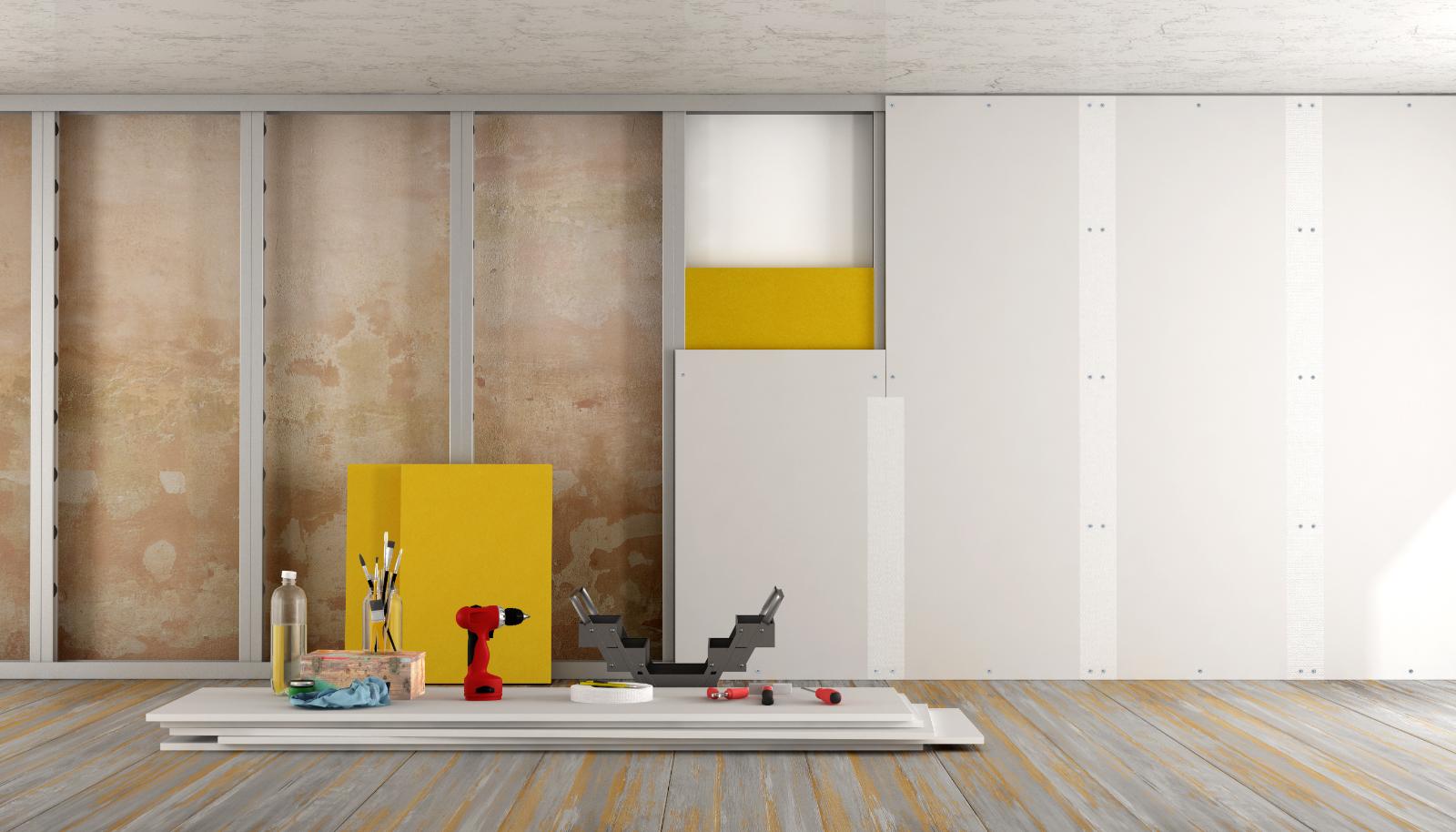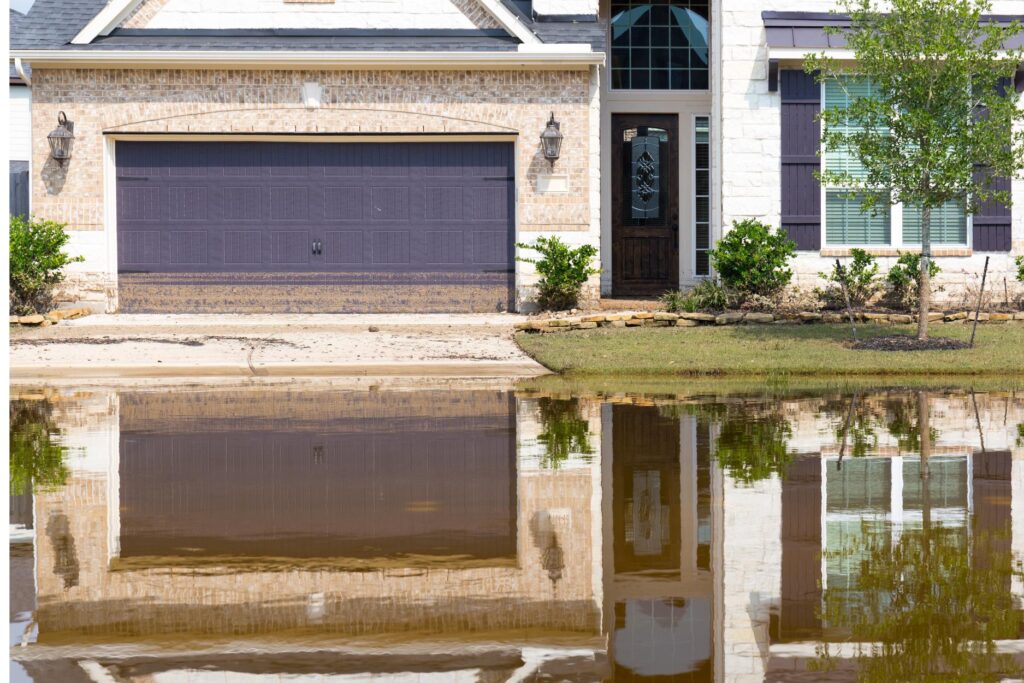Contents
To master the art of drywall patching with spackling for your DIY projects, understanding the intricacies of hole types and spackling varieties is essential. But it doesn’t stop there. Proper preparation, precise application, and meticulous finishing touches are all part of the equation. The secret lies in the details and the finesse of your technique. Are you ready to elevate your patching skills and achieve flawless results that will leave your walls looking professionally done?
Key Takeaways
- Choose reputable spackling brands like DAP or 3M for quality results.
- Match spackling technique to hole size for effective repairs.
- Sand gently in a circular motion for seamless blending.
- Prime patched the area before painting for better adhesion.
- Use the same paint finish type as the surrounding wall for consistency.
Types of Drywall Holes
When patching drywall with spackling, it’s important to identify the specific types of holes present for an effective repair. Understanding the various drywall repair methods is vital in determining the most suitable approach for each hole.
Small nail holes are a common issue and can be easily fixed with a dab of spackling using your finger. For larger holes caused by impacts or accidents, a more thorough repair method may be necessary. These could include patching mistakes such as using too much spackling, leading to uneven surfaces that are difficult to sand down later.
Spackling techniques vary depending on the size of the hole. For tiny holes, a lightweight spackling compound can be used, while for larger holes, a setting-type joint compound might be more appropriate due to its strength and durability.
Hole size limitations are important to take into account, as spackling isn’t suitable for repairing holes larger than around 3 inches in diameter. In such cases, a drywall patch or replacement might be necessary to ensure a sturdy and long-lasting repair.
Choosing the Right Spackling
To ensure a successful drywall repair project, choosing the appropriate type of spackling is vital for achieving a professional and long-lasting finish.
When selecting spackling for your patching needs, consider the following:
Spackling Brands: Different spackling brands offer various formulations suited for specific applications. Explore reputable brands like DAP, 3M, or Red Devil for reliable results.
Application Tips: Follow the manufacturer’s instructions for the best application practices. Make sure the area is clean, smooth, and primed before applying the spackling.
Drying Time: Understanding the drying time of the spackling you choose is essential. Allow ample time for it to dry completely before moving on to the sanding process.
Sanding Process: Once the spackling is dry, sand it down gently using fine-grit sandpaper to achieve a smooth and flawless finish. Be patient and meticulous during this step for professional-looking results.
Tools Needed for Patching
Prepare your toolkit with essential items for efficient drywall patching. To tackle patching techniques effectively, you’ll need a few key tools.
First and foremost, invest in a high-quality putty knife or spackling knife. These tools are important for applying and smoothing spackling compound over the damaged areas.
Additionally, make sure to have sanding tools on hand. Sandpaper with varying grits, a sanding block, or a sanding sponge will help you achieve a smooth and polished finish.
Surface preparation is vital before diving into patching. Alongside your sanding tools, gather a utility knife to cut away any loose paper or debris around the damaged area. A drywall sander can also be helpful for larger patching projects.
Moreover, consider having a vacuum cleaner nearby to clean up dust and debris generated during sanding.
When selecting paint for your patched drywall, make sure it matches the existing wall color. Keep spare paint for touch-ups after patching. A paintbrush or roller will be needed to apply the paint smoothly over the patched areas.
Preparation Before Patching
Before delving into patching your drywall with spackling, make sure the surface is clean and free of dust.
Gather all the necessary tools, such as a putty knife, sandpaper, and a drywall patch kit, to have everything within reach. This step will set you up for a smooth and efficient patching process.
Surface Clean and Dust
Make sure the surface is thoroughly cleaned and free of dust before proceeding with the patching process. To ensure a smooth and long-lasting repair, follow these essential steps:
Use a damp cloth: Wipe down the area with a damp cloth to eliminate any surface dust and dirt. This will establish a clean base for the patching material.
Vacuum the area: Use a vacuum with a brush attachment to suck up any loose dust particles that may be lingering on the surface. This will prevent dust from getting mixed into the spackling compound.
Tape off the surrounding area: Use painter’s tape to protect adjacent surfaces from dust and debris while you work. This will keep the area tidy and make cleanup easier.
Open windows for ventilation: Proper ventilation is vital to prevent dust buildup in the room. Opening windows will help disperse any airborne particles, creating a healthier environment for your patching project.
Gather Necessary Tools
Consider assembling the essential tools required for the upcoming drywall patching project to ensure a streamlined and efficient process. Tool organization is key to avoiding unnecessary delays or frustration during the patching process.
Make sure you have a putty knife for applying to spackle, sandpaper for smoothing out the patched area, a utility knife for cutting the patch material, a sanding block for precise sanding, and a dust mask for safety during sanding.
To prevent common patching mistakes, having the right tools is vital. Be certain to have a drywall saw for cutting out damaged sections, a pencil for marking areas to be patched, and a primer for sealing the patched area before painting.
Prioritize patching safety by wearing gloves to protect your hands and safety goggles to shield your eyes from debris. Remember these patching tips as you gather your tools to start on your drywall patching project.
Applying Spackling to Holes
To effectively apply spackling to holes in drywall, make sure the hole is clean and free of any debris or loose material. Proper preparation ensures a smooth and flawless repair.
Here are some expert tips to help you achieve professional-looking results:
Choose the Right Spackling Techniques: Depending on the size of the hole, select the appropriate spackling technique. For small holes, use a putty knife to fill the area with spackling compound. For larger holes, consider using a patching compound or mesh tape for added reinforcement.
Mind the Hole Size: Match the size of the hole to the appropriate repair method. Smaller nail holes may only require a quick dab of spackling, while larger holes may need multiple layers of compound to fully conceal the damage.
Patching Corners: When dealing with holes near corners, be extra cautious. Apply spackling carefully to avoid creating a bulky or uneven surface. Feather the edges of the repair to seamlessly blend it into the surrounding wall.
Finishing Touches Matter: Smooth out the spackling compound with a clean putty knife or sandpaper once it’s dried. This step is essential for achieving a flawless finish. Take your time to make sure the repaired area matches the rest of the wall perfectly.
Sanding and Smoothing Technique
To achieve a professional finish when patching drywall with spackling, mastering the sanding and smoothing technique is essential.
When using sanding techniques, start using fine-grit sandpaper (around 120 grit) to sand the dried spackling compound gently. Work in a circular motion to blend the patched area with the surrounding wall seamlessly. Be cautious not to oversand, as this can lead to uneven surfaces or even damage to the drywall.
After sanding, the smoothing process is pivotal for flawless results. Use a damp cloth to wipe away any dust or debris left from sanding. This step is important to guarantee the surface is clean and ready for the next phase.
Next, apply a thin layer of spackling over the patched area to fill in any imperfections or uneven spots. Smooth it out using a putty knife, feathering the edges to blend the patch with the rest of the wall seamlessly.
To complete the finishing touches and achieve professional results, lightly sand the patched area one final time with fine-grit sandpaper to ensure a smooth and uniform surface. Wipe away any remaining dust with a clean, damp cloth before proceeding to the priming step for a flawless finish.
Mastering the sanding and smoothing technique is key to achieving a polished look that seamlessly integrates your drywall patch with the rest of your wall.
Priming Before Painting
Applying a coat of primer before painting is essential to ensure proper adhesion and a smooth, uniform finish on your patched drywall surface. Primer prepares the surface, seals the patch, and ensures the paint color adheres evenly.
Here are some essential tips to achieve a flawless finish:
Importance of Primer: Before painting, the primer allows the paint to adhere better to the surface, preventing peeling and ensuring durability.
Sanding: After patching, sand the area lightly to create a smooth surface for the primer to adhere to, enhancing the final look.
Tips for a Smooth Finish: Apply the primer evenly across the patched area, blending it with the surrounding wall for a cohesive look.
Color Matching: Choose a primer that matches the color of your final paint to reduce the number of paint coats needed for a consistent finish.
Painting Over Patched Area
Achieving a smooth paint finish over the patched area requires proper preparation and technique. To begin, make sure the patched area is fully dry before painting. Depending on the spackling used, proper drying times can vary, so refer to the product instructions for guidance. Rushing this step can result in the paint not adhering properly or the patched area being visible under the paint.
When painting over the patched area, consider paint color matching and blending. To smoothly integrate the patched section with the rest of the wall, it’s important to match the paint color accurately. Take a sample of the existing wall color to your local paint store for precise color matching. If the patched area is small, blending the new paint into the surrounding wall can help disguise any differences.
Apply the paint using smooth, even strokes to ensure a consistent finish. It’s recommended to use the same type of paint finish (e.g., satin, eggshell, matte) as the surrounding wall for a cohesive look. Allow the paint to dry completely between coats according to the manufacturer’s instructions.
Applying multiple thin coats will often yield better results than one thick coat.
Final Touches and Cleanup
You’ll want to focus on thorough dust removal techniques to guarantee a smooth finish.
Smoothing out any imperfections in the patched area is essential for a flawless final result.
Pay close attention to these final touches and cleanup steps to achieve a professional-looking outcome.
Dust Removal Techniques
After completing the spackling process, the next crucial step is effectively removing any dust particles to achieve a smooth and flawless finish. To guarantee a pristine surface, follow these essential dust removal techniques:
Maintain a Dust-Free Workspace: Before starting, make sure your workspace is clean and free of any debris that could contaminate your freshly patched area.
Use Proper Vacuuming Technique: Employ a vacuum with a soft brush attachment to gently eliminate dust from the patched area and surrounding surfaces without causing damage.
Wipe Down Surfaces: Utilize a microfiber cloth slightly dampened with water to clean walls and ceilings, capturing any remaining dust particles for a polished look.
Check for Hidden Dust: Don’t forget to inspect corners and crevices for hidden dust that may have settled post-patching; a detailed check ensures a flawless final result.
Smoothing Out Imperfections
To complete the drywall patching process successfully, the next step involves smoothing out imperfections through final touches and cleanup. Begin by making sure the patched area is fully dry before proceeding.
Surface preparation is essential for a flawless finish. Sand the patched area gently using fine-grit sandpaper to level out any raised edges or bumps. Take care not to oversand and create an uneven surface.
Next, focus on filling cracks and blending the patch seamlessly with the surrounding wall. Apply a thin layer of spackling over the patched area, extending slightly beyond the edges for a smooth integration. Use a putty knife to feather out the spackling, gradually reducing pressure towards the edges for a cohesive integration.
Once the spackling is dry, lightly sand the area again to achieve a uniform surface. Employ finishing techniques to make sure the patch matches the surrounding wall texture.
Final Thoughts
Congratulations on mastering drywall patching with spackling! As you stand back and admire your flawless finish, envision a perfectly smooth wall without a trace of the once-visible holes.
The polished surface reflects the craftsmanship and attention to detail you put into the project. With the right tools, techniques, and patience, you have achieved professional results that will impress anyone who sees your handiwork.
Keep up the great work!




